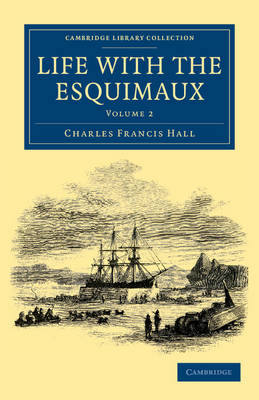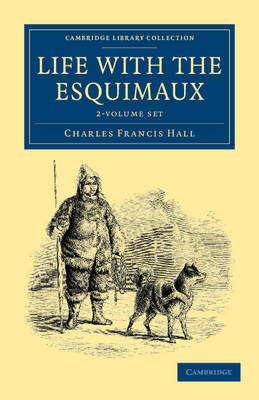Cambridge Library Collection - Anthropology
1 primary work • 4 total works
Volume 1
In 1860, Charles Francis Hall (1821–71), the American explorer, embarked on the first of two voyages to the Canadian Arctic region aimed at investigating the fate of Sir John Franklin's lost expedition of 1847. During his time in the Arctic, Hall lived amongst the Inuit community, learning their language and embracing their everyday life. First published in 1864, Hall's two-volume work remains of great interest to anthropologists, sociologists and geographers. His eye-witness accounts of the indigenous people's dwellings, hunting pursuits, birth and death rites, transportation, interpersonal relationships, and survival strategies in severe weather conditions provide an insight into Inuit culture in the nineteenth century. In Volume 2 he tells of his discovery in Frobisher Bay of artefacts from Martin Frobisher's sixteenth-century mining venture; the survival of these relics, together with his understanding of Inuit memory systems, convinces him that traces of Franklin and his crew may yet be found.
In 1860, Charles Francis Hall (1821-71), the American polar explorer, embarked on the first of two voyages to the Canadian Arctic region aimed at investigating the fate of Sir John Franklin's lost expedition of 1847. During his time in the Arctic, Hall lived amongst the Inuit community, learning their language and embracing their everyday life. First published in 1864, Hall's recollections remain of great interest to anthropologists, sociologists and geographers. His eye-witness accounts of the indigenous people's dwellings, hunting pursuits, birth and death rites, transportation, interpersonal relationships, and survival strategies in severe weather conditions provide an insight into Inuit culture in the nineteenth century. Volume 1 describes Hall's journey north, arrival at Holsteinborg, the Danish administrative centre in Greenland, and onward voyage to Baffin Island. In Volume 2 he tells of his various journeys around Frobisher Bay, where he discovers artefacts from Martin Frobisher's sixteenth-century mining venture.
In 1860, Charles Francis Hall (1821–71), the American explorer, embarked on the first of two voyages to the Canadian Arctic region aimed at investigating the fate of Sir John Franklin's lost expedition of 1847. During his time in the Arctic, Hall lived amongst the Inuit community, learning their language and embracing their everyday life. First published in 1864, Hall's two-volume work remains of great interest to anthropologists, sociologists and geographers. His eye-witness accounts of the indigenous people's dwellings, hunting pursuits, birth and death rites, transportation, interpersonal relationships, and survival strategies in severe weather conditions provide an insight into Inuit culture in the nineteenth century. In Volume 2 he tells of his discovery in Frobisher Bay of artefacts from Martin Frobisher's sixteenth-century mining venture; the survival of these relics, together with his understanding of Inuit memory systems, convinces him that traces of Franklin and his crew may yet be found.
In 1860, Charles Francis Hall (1821–71), the American polar explorer, embarked on the first of two voyages to the Canadian Arctic region aimed at investigating the fate of Sir John Franklin's lost expedition of 1847. During his time in the Arctic, Hall lived amongst the Inuit community, learning their language and embracing their everyday life. First published in 1864, Hall's recollections remain of great interest to anthropologists, sociologists and geographers. His eye-witness accounts of the indigenous people's dwellings, interpersonal relationships, hunting pursuits, birth and death rites, methods of transport, and survival strategies in severe weather conditions provide an insight into Inuit culture in the nineteenth century. Volume 1 describes Hall's journey north, arrival at Holsteinborg, the Danish administrative centre in Greenland, and onward voyage to Baffin Island, where his search for traces of Franklin, and his experience of Inuit life, began.


